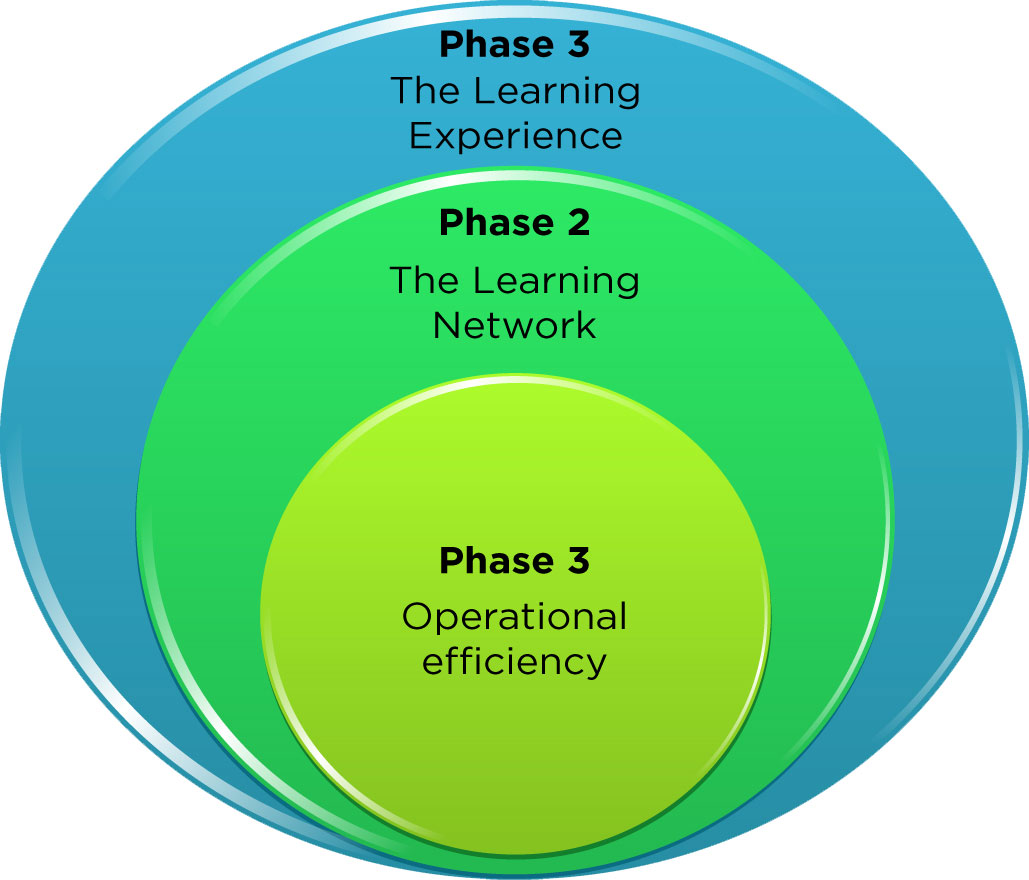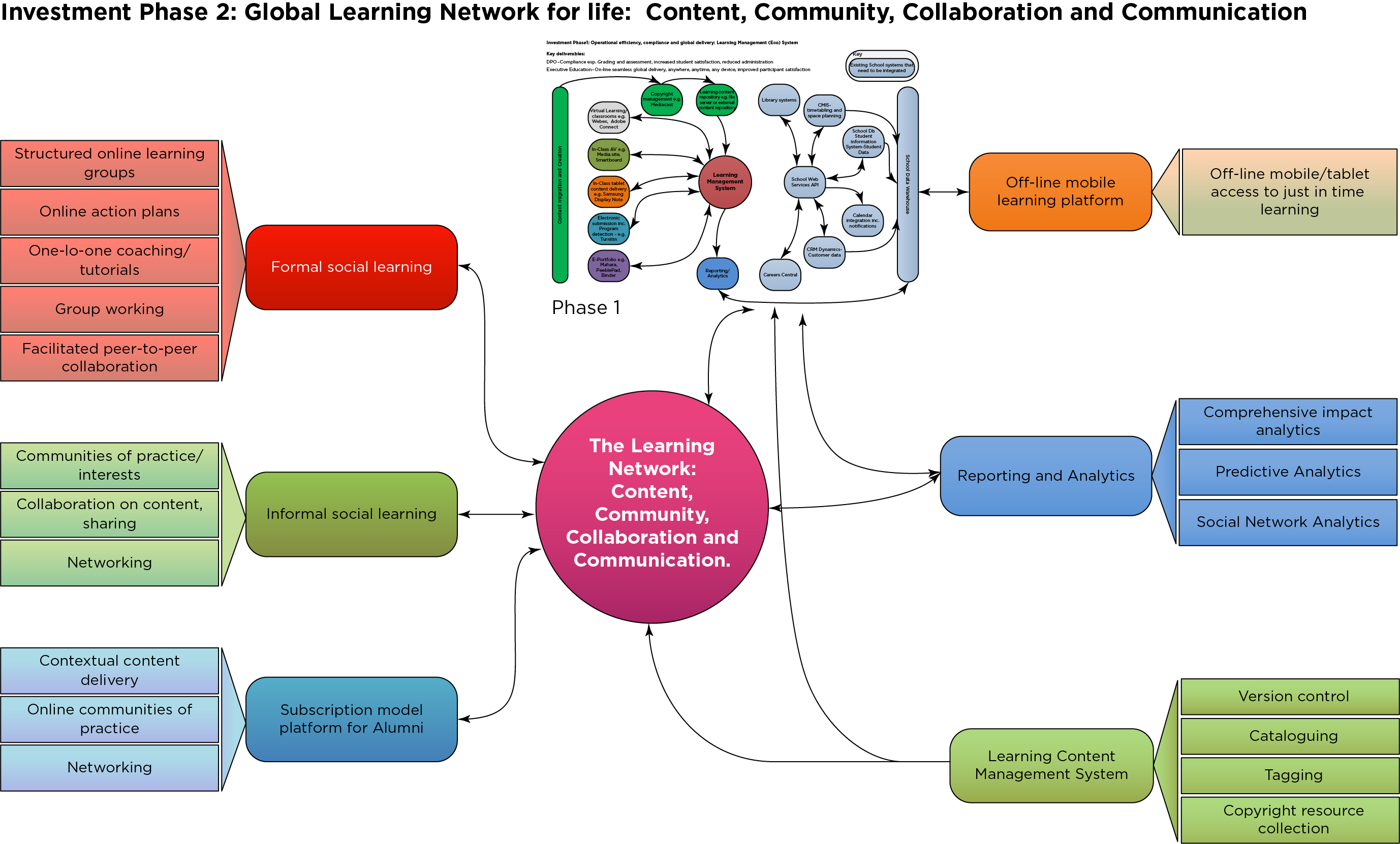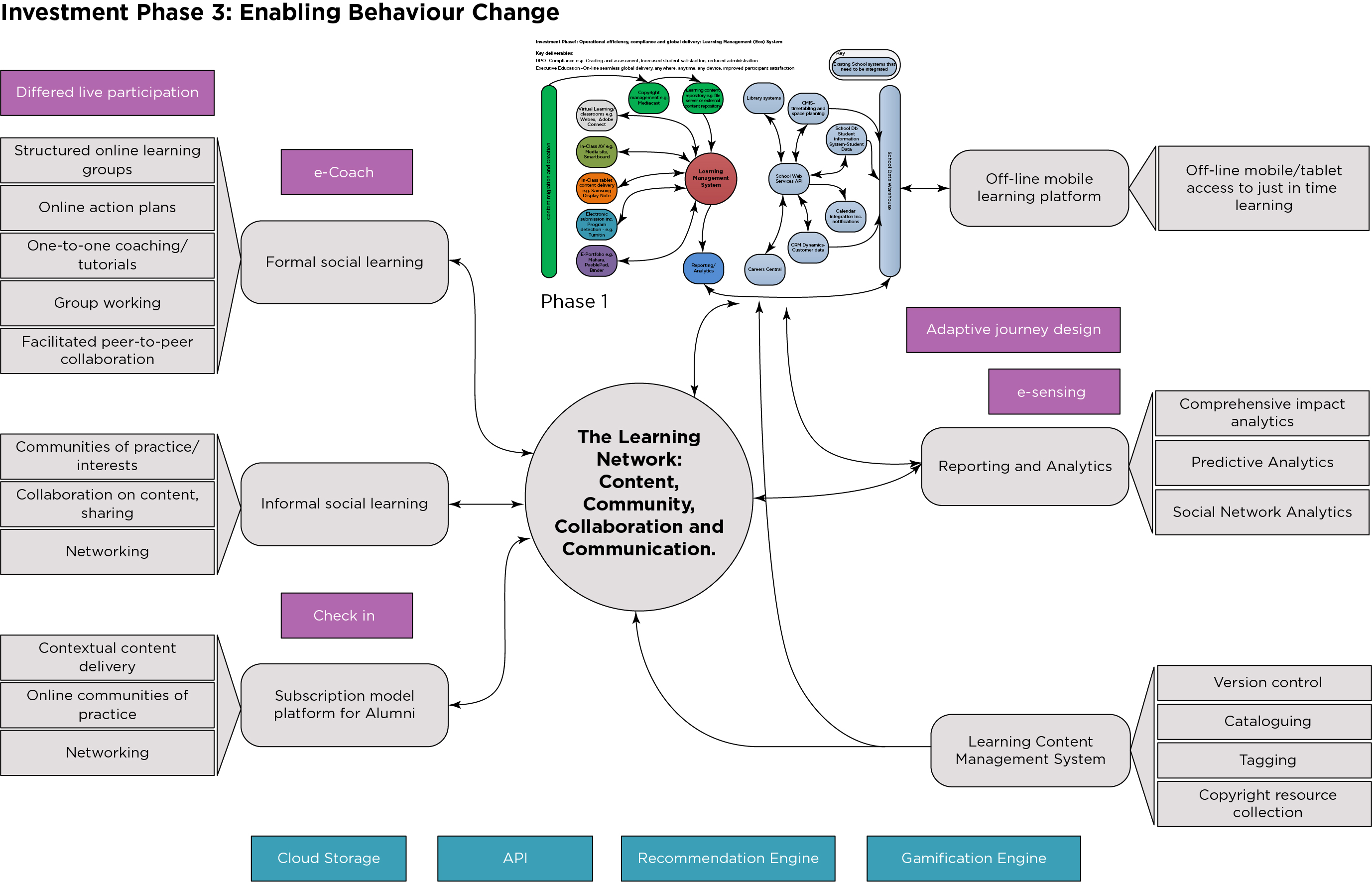Delivering the benefit All resources About this toolkit
About Delivering Delivering the benefits Managing the change
Managing the change
|
Enhancing learning and teaching practice through better use of a new or existing VLE is a major exercise in change management and you should not underestimate the resource required to achieve the desired benefits. In the section on Stakeholder engagement and communications, we talk about the need to ensure that all stakeholders are aware of what is going on and are able to be appropriately involved in the decision-making process. Now you are taking things a step further and requiring many of them to change established behaviours and do things differently. Technology change doesn't directly result in change to processes or culture but it can be a trigger to help effect change. |
 |
| Top Tips |
Recognise the need for proper change management and plan the change process carefully. Every institution is different so you need to understand what you want to achieve. You need to win the hearts and minds of academic and administrative staff and support them through the process.
|
Change management at the University of Huddersfield
The University of Huddersfield is conscious that the implementation of a new VLE needs a well structured approach to change management.
Andrew Raistrick, Business Analyst and Project Manager, told us that they have a well resourced transformation team focused on winning the hearts and minds of academic staff and supporting them through the process.
Features of the change process at the University of Huddersfield include:
- sponsorship of the transformation team by the Pro-Vice Chancellor for Teaching and Learning;
-
high-level representation from each school on the transformation team;
-
collaborative working with the supplier's own change management team;
-
awareness sessions for each school talking about how the change will happen and the benefits (29 sessions run so far);
-
a marketing team working on information for academics such as a set of posters addressing concerns with the previous system; retraining for all academics;
-
support for content migration by creating zip files of the existing content;
-
planning sessions encouraging academics to view this not as a simple migration from one VLE to another but to think about delivering better structured active learning and transforming the online aspects of learning;
-
module build sessions for academics so that they can build their new modules in a supported way;
-
screencasts and guides to support staff learning (over 200 developed in the first six months of the project);
-
use of analytics to see who is engaging with the resources.
Focus on the benefits
London Business School conducted a VLE procurement exercise in 2013/2014 and, in a close-run process, different parts of the business had a preference for different suppliers.
Mark Pountney, Head of Business Technology and Innovation, told us a decision was made based on a specification with 650 requirements in the knowledge that no system would do all of those things. However, those people who didn't get their first choice tended initially to focus on the things that weren't delivered rather than the improvements that the new system brought.
Mark feels the implementation project wasted time trying to find solutions to the gaps. In his view they would have been better off accelerating the implementation rather than spending six months focusing on things that the new product didn't do.
The first area of the institution to go live with the new VLE was one that would have preferred a different solution. However they soon found it worked well and became champions for the project. With hindsight they realised they had initially been worrying about the wrong things and couldn't see the benefits they were getting.
|
"Proper change management, supported at the highest level, is what is needed. It is important to provide as much central support as you can.." Andrew Raistrick, Business Analyst and Project Manager, University of Huddersfield |
|
"The change process was a non trivial task. Almost inevitably some academics who had rubbished the existing VLE for years decided they liked it once they were asked to change." Anonymous VLE review project manager |
 |
The University of Hull moved from an open source VLE to a commercial product in the 2016/17 academic year and decided to separate the change process into two stages. The first stage involved increasing consistency in the way the VLE was used. The University of Hull prefers to call this 'expected use' rather than minimum standards. The expected use initially had a focus on lecture notes, handbooks, timetables and assessment information. The University ran monthly reports for each faculty to show which staff were engaging with the process so that the faculty could help to ensure that all staff were ready. Chris Turnock, Interim Director, Learning and Teaching Enhancement Directorate, told us that the plan is to start to 'raise the bar' in terms of using the VLE to increase student interaction and collaboration after two years of full implementation. |
 |
London Business School took a very structured approach to benefits realisation. Their implementation plan was split into three phases. Each phase drew on lessons learned from the previous one and was associated with a set of clearly defined benefits. These benefits mapped back to the personas and scenarios you can find in the resources for the section Why review your VLE?
Phase 1 Adapted from London Business School benefits realisation diagram. (click to enlarge)
Phase 2 Adapted from London Business School benefits realisation diagram. (click to enlarge)
Phase 3 Adapted from London Business School benefits realisation diagram. (click to enlarge) |





